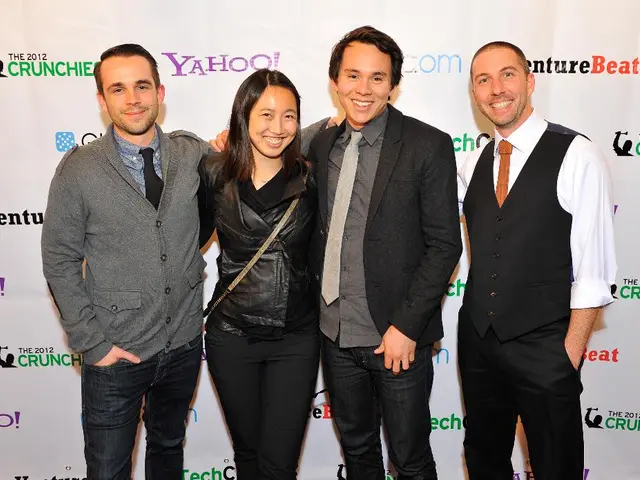Grid analysis by Energy Department unfairly favors costly, revived power facilities
The United States Department of Energy (DOE) has recently released a report on U.S. power sector supply and demand forecasts, sparking significant concern among utilities and grid operators. The report predicts a sharp rise in power outages by 2030 due to aging power plants retiring and a lack of dependable replacement capacity.
Key concerns about the report's reliability stem from the assumption of rapid, large-scale plant retirements without matching dependable replacement capacity, especially dispatchable generation like coal or natural gas baseload plants. The forecasted addition of significant non-firm, primarily renewable capacity may not provide sufficient grid reliability during peak demand or extreme events. The report's findings also overlook the impact of rapid load growth driven by data centers and electrification, which is outpacing the speed at which firm generation capacity can be added.
Utilities and grid operators worry that the DOE's assumptions could lead to underinvestment in firm, dispatchable generation and inadequate planning for peak demand, increasing blackout risks dramatically. The report's findings have stirred debate about energy policy direction, with DOE officials emphasizing the need to "renew a focus on firm generation" to maintain reliability.
However, grid operators are actively working on reforms to address capacity shortfalls and integrate new resources more effectively. In market-based regions like Texas and PJM Interconnection, new resources are being built in response to growing demand and market signals. Electricity demand is growing faster than it has in decades, and utilities and grid operators are planning to build more and faster to meet the moment.
By 2030, utilities plan to build nearly twice as much gas and battery capacity as the DOE assumes will come online nationwide. In Texas, the DOE report includes just 17 GW of new batteries and less than 1 GW of gas by 2030, despite 37 GW of new batteries and gas with signed interconnection agreements and another 199 GW in the interconnection queue. Solar, wind, battery energy storage, and natural gas feature heavily across these plans.
The DOE's report only accounts for projects already under construction or with signed contracts, creating a distorted picture of the grid in 2030. The DOE's analysis assumes the U.S. power sector will stop building new resources after 2026, which is contrary to how utilities and grid operators plan for future needs. Utilities conduct detailed analysis to make long-term resource plans, evaluating various potential resource portfolios.
Grid experts know how to keep the lights on, and the federal government should support this process, not override it with faulty assumptions and top-down directives. The most effective way to maintain grid reliability is to let planners plan, markets work, and utilities build the resources they've already identified as the most affordable path forward. Utilities, regulators, and grid operators have extensive planning efforts in place to maintain grid reliability.
If zombie coal and gas plants displace newer, cleaner and cheaper generation options, they could become a liability, with consumers on the hook for most of the risk. The evolving grid landscape and regional variability require nuanced, coordinated approaches beyond the report's single-metric framework to avoid reliability risks raised by the DOE.
- The manufacturing industry is closely following the DOE's power sector report, concerned about potential impacts on energy consumption.
- Finance experts question the report's accuracy, suggesting it may not provide a comprehensive view of the energy industry.
- Energy companies are exploring alternatives to aging power plants, focusing on renewable sources and innovative technologies.
- In the aerospace sector, they are investigating the potential for energy storage in aircraft to enhance efficiency.
- retailers are evaluating energy-efficient solutions to reduce costs and environmental impact.
- Entrepreneurs see an opportunity in the growing energy sector, with a focus on clean, sustainable solutions.
- Interior designers are incorporating smart home devices into their projects, promoting energy-efficient living.
- Cooking enthusiasts are adopting energy-saving appliances and sustainable cooking practices.
- Transportation companies are embracing electric vehicles and smart transportation systems to reduce carbon emissions.
- Leaders in various industries are advocating for diversity and inclusion in their organizations, including in the energy sector.
- The wearables market is growing, with devices offering health and energy monitoring features.
- In the home and garden industry, smart home devices and energy-efficient solutions are popular choices for homeowners.
- Fashion and beauty brands are starting to incorporate sustainable materials and practices in their products.
- Food and drink businesses are focusing on local, organic ingredients to cater to the growing demand for healthy, sustainable options.
- Dining establishments are adopting energy-efficient practices and offering plant-based options to attract conscious consumers.
- The automotive industry is investing heavily in electric and self-driving cars, promising a shift in transportation.
- Small businesses are seeking guidance on energy-efficient solutions to cut costs and reduce their carbon footprint.
- Investors are looking to venture capital in the renewable energy sector for potential returns.
- Wealth management firms are advising clients on sustainable investment options in the energy industry.
- Real estate agents are promoting energy-efficient homes to attract eco-conscious buyers in the housing market.
- Commercial and residential buildings are being designed with smart energy systems to optimize usage and savings.
- Home improvement projects are increasingly focused on energy efficiency and sustainability.
- Bakeries are experimenting with efficient oven designs and energy-saving recipes to reduce energy consumption.
- Beverage companies are developing eco-friendly packaging solutions to minimize waste and environmental impact.
- Love and dating apps are integrating health and lifestyle features, including fitness and wellness tracking.
- Businesses are offering online career opportunities in various fields, including energy and technology.
- Cybersecurity companies are working to secure the smart grid, ensuring data and privacy protection in the evolving energy landscape.








